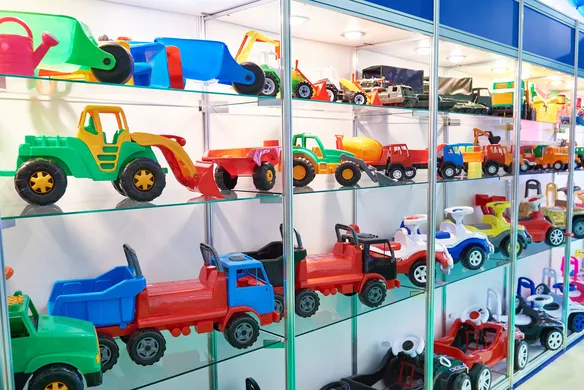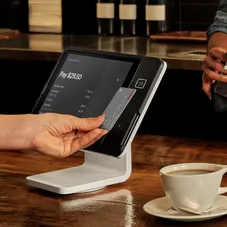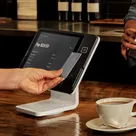Table of contents
With the Christmas season fast approaching, retailers are busy ordering and organising Christmas inventory. This year, however, COVID-19 has impacted the global supply chain by disrupting production and delivery schedules. The toy industry, in particular, has seen a considerable reduction in new products arriving in time for the busy holiday season.
While new supply might be limited, many eCommerce toy sellers are simultaneously carrying excess inventory, given that many celebrations and associated gift-giving occasions were largely cancelled.
The good news is that there are a number of ways to excite customers about existing products and sell your inventory. Here are eight tips to help you sell excess inventory.
Lean into nostalgia
A wave of nostalgia has enveloped consumers as they gravitate to items that remind them of simpler times. For example, many shoppers retreated to comfort food, which created a notable surge in familiar food brand sales. It’s a strategy that eCommerce toy sellers can replicate to help reduce surplus inventory.
Even if your holiday inventory isn’t stocked with true vintage items (say, sets from the ’80s), you can still creatively position a wide variety of current toys as old favourites, reminding customers of the joy they brought when shoppers themselves were kids.
For example, while you might not have a classic board game, you might have a video game adaptation. And while LEGO® sets, Cabbage Patch Kids®, and Hot Wheels® cars might have gotten a makeover over the years, they still spark similar imagination play.
Focus on useful items for socially distant times
Puzzles, books, art sets, and board games might have been almost afterthoughts in previous years, but shoppers can’t get enough of them now.
If you want to sell overstock inventory items that can be used at home, create a special page for shopping ease. Then, update and optimise the copy and product descriptions so they appear in search engines. For example, you could add phrases like “fun games to play at home” or “best indoor toys for kids”.
In the past, many holiday shoppers opted for experience gifts, like museum memberships or tickets to a play, over physical items as gifts. As social distancing protocols continue, consumers are likely to once again favour more traditional gifts like toys, especially more involved toys that can keep kids occupied (a point you can subtly make as you advertise your offerings).
Put marketing muscle behind potentially rare or buzzy items
The collectible market is proof that one person’s trash is another person’s treasure.
Take a look at Gumtree or eBay and see which toys seem to be selling at a premium. Then, go through your inventory to determine whether there are any hard-to-find items that still might be generating major buzz, like last year’s popular L.O.L. Surprise!™ toys, Hatchimals™, or Funko figures. Even sports trading cards, which had dropped in popularity, have seen a resurgence.
It may be that people are more interested in starting a collection with the extra time on their hands. Be careful not to exaggerate these items’ potential value in your marketing, but you should do what you can to capitalise on a craze and sell surplus inventory.
Spruce up your item pages
First impressions count. In the same way an estate agent stages a home with fresh furnishings, any merchandise looks better when it’s styled correctly. Online merchandising can go a long way to help increase excess inventory sales.
Take a close look at your product images and item descriptions to identify possible improvements. Or make it easier for a casual shopper to make a selection by grouping items into holiday gift guides built around certain ages or price points.
You can also attract interest with product video content, such as “unboxing” videos, where customers film themselves excitedly opening the package or playing with the toy to show exactly how it can be used.
Create product bundles—or unbundle
Grouping complementary products (one hot/one not) and pricing them slightly lower when sold together can help clear surplus inventory and move your less-popular products without taking a total loss.
So, if your puzzles are flying off the shelves and your stuffed animals are still sitting there, see if you can pair them up as a set. You also could do a buy-one-get-one holiday promotion where you throw in a lower-priced item as a gift with purchase. This can make a lacklustre product a little more attractive.
And if you have excess inventory items that are already in a bundle, like a book and action figure, consider selling them separately. Together, the price might have looked too steep, but separating them and lowering their prices could help you move both.
Introduce a charitable component
If you just can’t sell inventory items of a certain kind, consider donating them to a local organisation to spread some holiday cheer. Make sure you follow all applicable tax rules regarding how much you can deduct.
To get even more for your donation, consider tying it into a social media marketing campaign. Post photos of your socially distant team wrapping and delivering gifts to a local hospital, shelter, or donation site, and challenge your customers to do the same.
Up your marketing and promotions
No matter the strategy to sell surplus inventory, now is the time to communicate consistently with your customers through email newsletters and your social media channels. Post engaging content, like:
- Behind-the-scenes videos showing you or your staff getting toys ready to ship or demonstrating how to set up and use a specific product.
- Product rankings compiled by bloggers or websites showing where your surplus inventory items rank on hot gift lists.
- Digital holiday gift guides incorporating a wide range of price points.
- Creative promotions, like special theme days when stuffed animals or books are 10 per cent off.
- User-generated content, like vintage photos of customers or employees with favourite holiday gifts.
The goal is to keep your social media pages filled with a variety of content and posts—some about your products, some educational, and some just for fun.
Price judiciously
Finally, think carefully about your discounting tactics. While it might be tempting to slash prices across the board to sell overstock inventory and recoup some of your costs, consider reducing prices selectively.
Incite the feeling of scarcity and boost sales for lingering items by labelling categories “limited inventory” or “only xx left”, noting that something will soon be “gone forever”. Adding flags next to your pricing calls attention and drives interest.
While this holiday season might be challenging, selling toys shouldn’t be. Promote your merchandise creatively, and your customers are bound to be more interested in your excess inventory.
![]()











